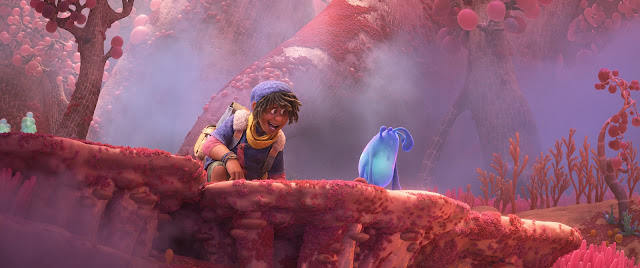It's the end of another year.
Saturday, December 31, 2022
THE END OF 2022
Monday, December 26, 2022
STEALING THE UR POWER OF COMICS
 |
| John Gannam |
 |
| Mike Ludlow |
 |
| Harry Anderson |
Thursday, December 15, 2022
ONE LOVELY DRAWING, part 68
On my recent visit to the Norman Rockwell Museum I lucked into their exhibition of Norman Rockwell Drawings.
There, I was particularly struck by this lovely drawing, Norman Rockwell's interpretation of the classic theme of artist and model:
Rockwell portrays this artist as a circus contortionist-- the opposite of his ramrod straight, expressionless model. We see the artist struggling to infuse his model with a glamorous flourish where none exists.
Look at what's taking place in this tiny space: the artist holds the magic charcoal with a highly affected grasp, inventing a sweep of the hair and alluring eyes that aren't on the model.
.jpg) |
| This is what a hand looks like when it's trying to change reality with sheer force of will |
Note how the artist cocks his head way back to give him the perspective necessary to find glamour in his bland and boring model. The artist's pretentious beret tells us much about his self-image...
But his saggy pants, frayed cuffs and worn shoes tell us more about the reality of the situation:
We are told that his drawings are rich with visual and psychological subtleties, and I believe that to be true but I also believe that pretentious art critics, clinging to their own affectations, tend to overlook the rich field of visual and psychological subtleties in more representational art.
Tuesday, December 06, 2022
WHEN IS A TREE THE SAME AS A DOG?
 |
 |
| Gustave Dore illustrates the age old custom of defenestration |
 |
| Subtle clues |
Monday, November 21, 2022
NEW DISNEY ANIMATED FILM: STRANGE WORLD
Computer animation-- the marriage of digital technology and human creativity-- has lived through rocky periods of adjustment.
 |
| Computer animation in 2015 wrecked the charm of Charles Schulz's Peanuts |
 |
| Some things don't change: every Disney movie needs a cute sidekick that can be sold in toy stores. |
This is an artistic accomplishment that could never have been achieved with live action or hand drawn animation or any other previously known medium. It was a joy to see a movie where human creativity was able to keep up with, make excellent use of, and blend seamlessly with, digital technology.
Monday, November 14, 2022
NORMAN ROCKWELL PAINTS THREE KINDS OF GOLD
But like an unrequited lover, he worshiped the physical world from afar. It's hard to name another 20th century artist with a greater appreciation for physical matter.
It's not always easy to tell from the way Rockwell's work has been reproduced in cheap magazines. But compare this printed cover for the Saturday Evening Post:
with the big, glowing original painting hanging on the wall at the Rockwell museum:
His description of the girl's plastic raincoat is a tour de force:
Notice the attention he paid to the rim on the lid of the paint can, or the bottle of medium, or the scuffed shoe:
Similarly, there is nothing formulaic about Rockwell's treatment of the wooden box. Those lines are not straight because Rockwell understood and cared about how the box had been treated on its voyage through the material world. Here is intense, honest observation:
For another example, in the corner of Rockwell's painting of a pharmacist...
... you can see that he didn't neglect the bottles, the test tube, the spoon. Importantly, these obsessive details are not described with photographic realism, as Rockwell's thousands of clueless imitators would surely have painted them. They are expressed through the loving eyes of someone with rapturous appreciation for their physical qualities...
There have been other great materialists in art before Rockwell. Vermeer and the golden age Dutch painters delighted in the properties of fine material objects: the textures and patterns of lovely fabrics and tapestries, the sheen of metals, the soft feel of furs.
Renaissance art was also a period of great materialists. Freed from the medieval focus on the supernatural (and spurred on by the invention of soap) Renaissance painters obsessed over the surfaces of the secular world-- the nuances of human flesh and the reflections of armor.
Norman Rockwell was a true materialist in that tradition and, in my view, can walk proudly in that company.










.jpg)
.jpg)
.jpg)
.jpg)













.jpg)
.jpg)


.jpg)
.jpg)
.jpg)

.jpg)





.jpg)

.jpg)

.jpg)
.jpg)
.jpg)
